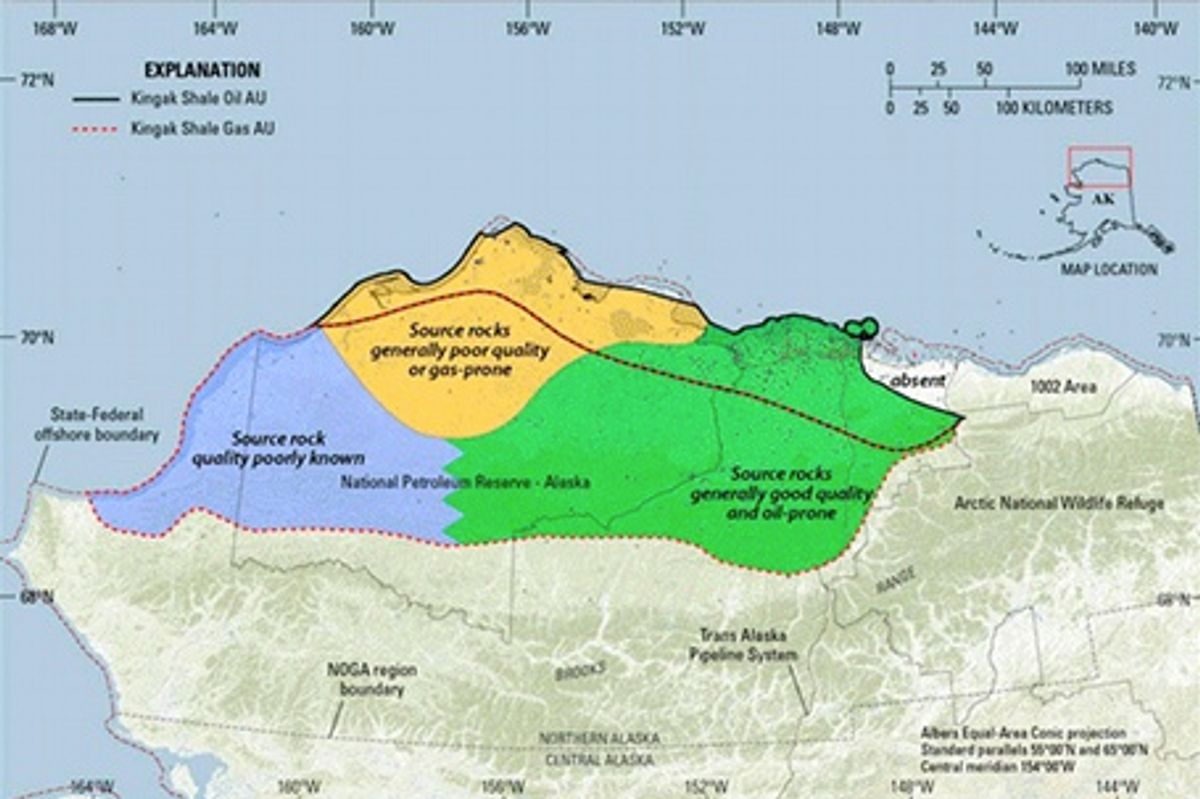Oil drilling has gone on for years on Alaska's remote North Slope, but it has been limited to conventional resource extraction. More recently, however, with the ongoing success (economically, at least; environmentally is another story) of unconventional extraction of shale oil and natural gas in the lower 48 states, there is increasing interest in expanding fossil fuel extraction in Alaska. And now the U.S. Geological Survey has released its first ever assessment of "continuous" oil and gas in the North Slope region.
Continuous oil and gas refers to fossil fuels that are still locked up in rocks like shale; conventional resources involve oil or gas that has migrated away from the source rocks. The new USGS report found technically recoverable oil resources of between zero and 2 billion barrels. Natural gas resources lie somewhere between zero and 80 trillion cubic feet, and liquid natural gas between zero and 500 million barrels.
Those zeroes obviously make the range enormous, but they're in there for good reason. No actual drilling for these types of resources has ever been attempted on the North Slope, and it is impossible to know for sure what could be extracted before the process actually begins. According to the USGS: "The shale formations assessed have generated oil and gas that migrated into conventional accumulations, including the super-giant Prudhoe Bay field. It is also probable that these shale source rocks likely retain oil and gas that did not migrate, but only drilling can concretely confirm this or not."
For a bit of comparison: The Willison Basin currently undergoing a huge extraction boom in North Dakota contains about 3.6 billion recoverable barrels of oil; the Marcellus Shale formation, home to another boom in Pennsylvania, Ohio, New York, and other states, has more than 88 trillion cubic feet of shale gas.
The USGS, of course, makes no statements on whether or not we should actually go after these potentially huge fossil fuel resources in Alaska. There are always risks associated with drilling, and many critics say that if major incidents occur in such remote areas they will be much harder to contain and clean up than elsewhere. And there is already precedent: earlier this month a natural gas well blew out on the North Slope near the mouth of the Colville River, spilling drilling mud and methane.
The Obama Administration has generally been friendly to drilling proponents, opening up Alaska's national petroleum reserve to extraction and promising an all-of-the-above energy strategy in his most recent State of the Union address. Whether the shale gas boom spreads all the way to Alaska's North Slope remains to be seen.
Image via USGS
Dave Levitan is the science writer for FactCheck.org, where he investigates the false and misleading claims about science that U.S. politicians occasionally make.




